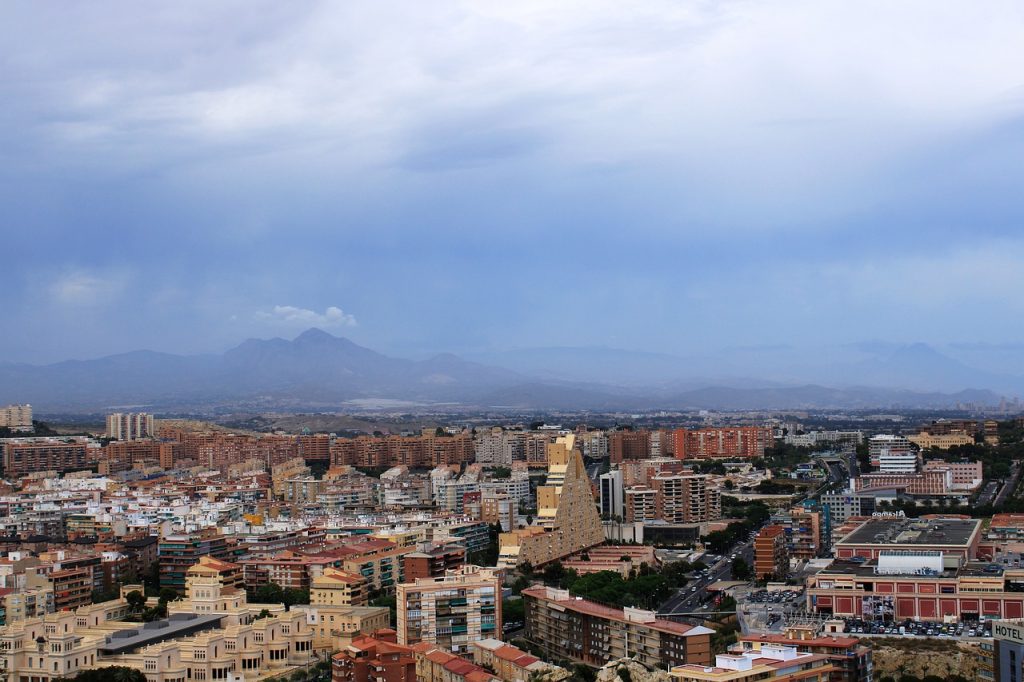Alicante Province, nestled along Spain’s southeastern coast, is a gem of the Valencian Community, known for its stunning beaches, rich history, and vibrant culture. This travel guide offers an in-depth look into the enchanting world of Alicante, providing insights into its main attractions, culinary delights, and hidden treasures, ensuring an unforgettable experience for any traveler.
Introduction to Alicante Province
Alicante Province is more than just a gateway to the Costa Blanca; it's a region with a distinct identity, steeped in history, festivity, and natural beauty. The area boasts over 200 kilometers of coastline, featuring some of the Mediterranean’s most beautiful beaches and coves. Inland, the landscape transitions into mountainous terrain, dotted with traditional Spanish villages, vineyards, and olive groves, offering a complete and varied travel experience.
Alicante City: The Heart of the Province
The city of Alicante itself serves as an excellent starting point for visitors. Dominated by the imposing Mount Benacantil, the cityscape is crowned by the magnificent Castle of Santa Bárbara, dating back to the 9th century. A visit here provides panoramic views of the city’s marina and surrounding areas. The Explanada de España, a marble-tiled promenade lined with palm trees, offers a lively atmosphere and leads into the city’s traditional old quarter. Here, narrow streets house tapas bars, cafes, and boutiques, buzzing with the energy of local life.
Museums and Cultural Sites
Alicante is rich in culture and history. The Archaeological Museum of Alicante (MARQ) offers innovative displays that bring the region’s past to life, from ancient Roman artifacts to Islamic ceramics. Art enthusiasts will appreciate the Alicante Museum of Contemporary Art (MACA), housing works by Spanish artists including Dalí, Miró, and Picasso.
Coastal Charms: Beaches and Beyond
The Costa Blanca, or ‘White Coast’, is famed for its white, sandy beaches and crystal-clear waters. Benidorm, one of the most popular beach destinations, combines beautiful beaches like Playa de Levante and Playa de Poniente with vibrant nightlife and family-friendly attractions such as Terra Mítica, a theme park inspired by ancient Mediterranean civilizations.
For a quieter experience, the town of Altea offers a more relaxed pace with its stunning waterfront and hilltop old town characterized by white-washed houses and a beautiful church with a picturesque blue dome. Nearby, Calpe is famous for the Peñón de Ifach, a massive limestone outcrop that provides a challenging climb and spectacular bird’s-eye views.
Culinary Journey Through Alicante
Alicante’s culinary scene is as diverse as its landscape. The region is renowned for its rice dishes, notably paella, which can be savored in any of the seaside restaurants. Seafood is a staple, with dishes like arroz a banda (rice cooked in fish stock) and caldero (fish stew) showcasing local flavors. For a taste of something uniquely Alicantino, try the turron, a sweet nougat made from almonds, which is especially popular during Christmas.
Local Markets and Vineyards
Visiting local markets like the Central Market in Alicante city offers insight into the daily life of Alicantinos and an opportunity to sample local produce and artisanal goods. Wine enthusiasts will enjoy exploring the vineyards in regions like Vinalopó, where the Monastrell grape is king, producing robust reds and lively rosé wines.
Off the Beaten Path in Alicante Province
Beyond the typical tourist spots, Alicante has much to offer. The mountainous interior is home to castles like the fortress at Guadalest, accessible only through a tunnel carved into the rock, providing stunning views over a turquoise reservoir. Another hidden gem is the Canelobre Caves, a series of dramatic stalactites and stalagmites formations inside a mountain near the town of Busot.
For a touch of greenery, the Palm Grove of Elche, a UNESCO World Heritage site, is one of the largest palm groves in the world, with over 200,000 palm trees. The nearby Museum of the Palm Grove provides context to this unique agricultural practice.
Practical Information for Travelers
Best Time to Visit
The best time to visit Alicante is between April and June or September and October when the weather is pleasant, and the crowds are fewer. The summer months can be extremely hot and crowded, particularly in popular coastal areas.
Getting Around
Alicante is well-connected by air, with Alicante-Elche Airport offering numerous international flights. Within the province, a network of buses and trams makes it easy to explore both the coastal areas and the inland. Renting a car is advisable for those wanting to venture into less accessible areas.
Accommodation
Options range from luxury resorts along the coast to charming boutique hotels in the old towns and budget-friendly hostels in Alicante city. Rural accommodations, such as country houses and agritourism spots, provide a different perspective on the region.
Conclusion
Alicante Province offers a blend of historical richness, natural beauty, and modern amenities that make it an ideal Spanish getaway. Whether it’s exploring ancient fortresses, relaxing on sun-drenched beaches, tasting local delicacies, or discovering quaint mountain villages, Alicante promises a diverse and enriching travel experience.
Frequently Asked Questions (FAQs)
What is the best time to visit Alicante Province?
The ideal times to visit Alicante are from April to June and from September to October, when the weather is mild and there are fewer tourists compared to the busy summer months
Are there family-friendly attractions in Alicante Province?
Yes, Alicante Province offers several family-friendly attractions, including Terra Mítica theme park in Benidorm, the beaches of Calpe, and the interactive exhibits at the Archaeological Museum of Alicante
What are the must-try foods in Alicante?
When visiting Alicante, don't miss trying local specialties such as paella, arroz a banda (rice cooked in fish stock), caldero (fish stew), and the traditional sweet, turron
Can you recommend some hidden gems in Alicante Province?
For a unique experience, visit the fortress at Guadalest, explore the dramatic Canelobre Caves, or walk through the UNESCO-listed Palm Grove of Elche
How can I get around Alicante Province?
Alicante is well-connected by public transportation with a network of buses and trams. For more flexibility and access to remote areas, renting a car is highly recommended
